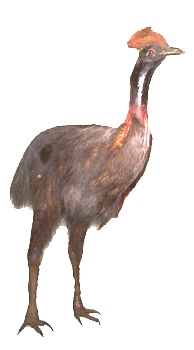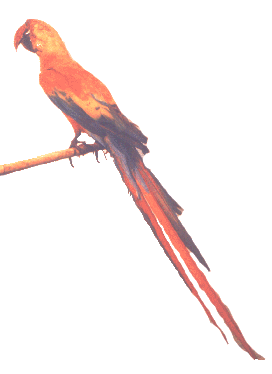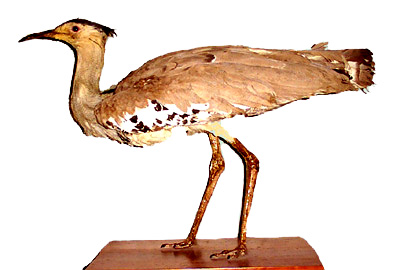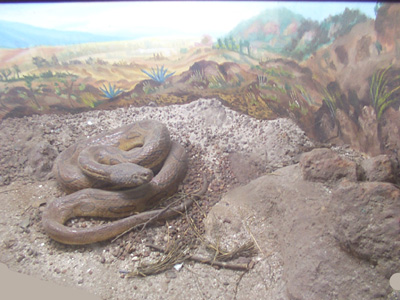 |
|
Limb Bones of Moa
Left femur, right tibia, meta tarsus and
middle toe bones of Moa are displayed. It was a giant extinct bird, lived in New Zealand. It
was about 12 feet tall. It lived about 500 years ago. It had three toes in each leg. It is
also known as "Diornis" which means "huge bird". |

|
 |
Cassowary
The cassowary is a large flightless bird
confined to the Australian region, inhabiting densely wooded country. They generally keep to
shady spots, emerging from cover only in the morning and evening and feed on fallen fruits,
berries and some times also on insects. The cassowary can run with amazing speed leaping over
obstacles as much as six feet high. In captivity they are almost omnivorous and become
extremely tame. Old males become very fierce when cornered, kicking and striking with their
beaks. Their plumage is used for making mats, rugs, head-ornaments, etc. |
|
Macaw Parrot
The macaws of Central and South Africa
are large gorgeously coloured parrots with rich yellow and green wing coverts. They are
perhaps the most gaudily coloured members of the parrot family. The flight of macaws is
powerful and their note is harsh and screaming. They crush and eat hard nuts of various kinds.
|
 |

|
The Great Bustard (Otis tarda)
The Great Bustard is a widely
distributed species, ranging over South and Central Europe, and then to North Africa and
inhabiting from Central Asia to North West India. It is partly migratory and is an occasional
visitor to Britain. It is typically an inland bird, frequenting dry grassy and sandy plains or
cultivated ground where the crops are low. It is omnivorous, feeding on young corn, plantains,
berries and seeds as well as insects and their larvae, molluscs, frogs or even small reptiles
and mammals. The eggs are deposited in an excavation in the soil. |
| The Russell's Viper
The Russell's Viper (Vipera
russelli) (Tamil: Kannadi Viriyan) is a beautiful rufous brown or sandy brown snake
with long rows of large, oval, black-edged spots looking like chains. The head bears a
V-shaped mark with its apex pointing forwards. The belly is white with small dark spots
scattered sparsely. It commonly inhabits the plains and often prefers open country. In
captivity it is sluggish and does not readily bite, but when disturbed or irritated, it hisses
fiercely and strikes with great force. Its bite is almost fatal to man. As the venom of the
Russell's Viper has a strong local action, killing the tissues near the bitten part, there is
intense pain and blood continues to ooze out from the seat of the bite for a considerable
time, the poison tending to prevent the clotting of the blood. The victim may die in a few
hours or after a few days, depending on the amount of poison injected. The Russell's Viper is
a prolific breeder, bringing forth about thirty to forty or more young ones in one brood. The
young ones are active and bite more readily than the adults.
|

|
|
 |
|